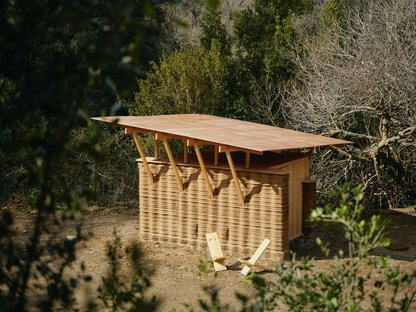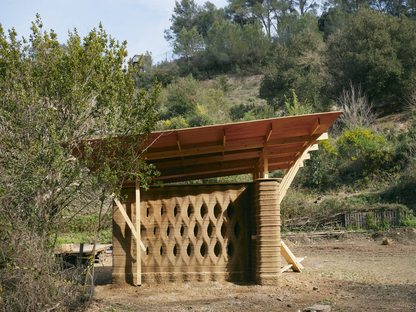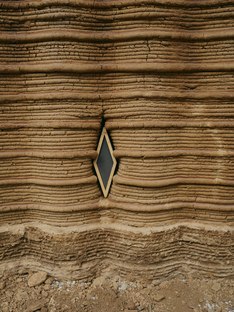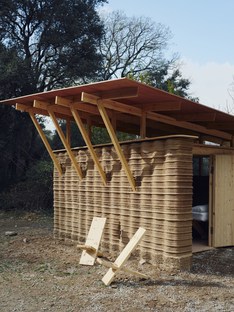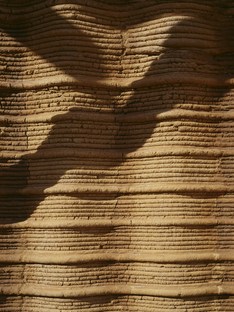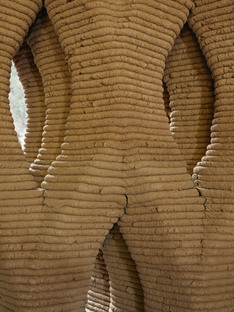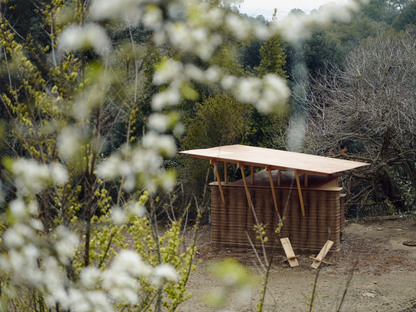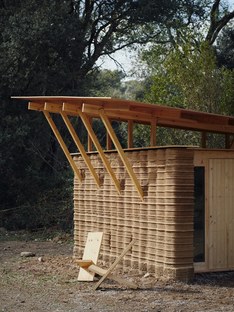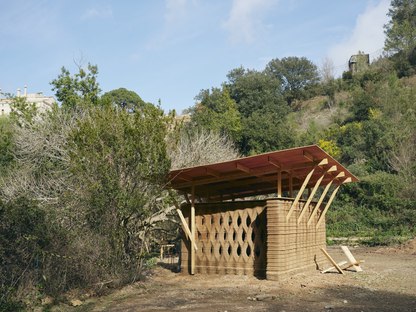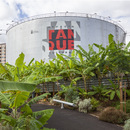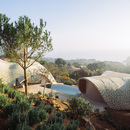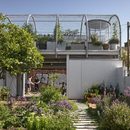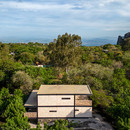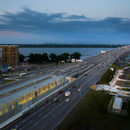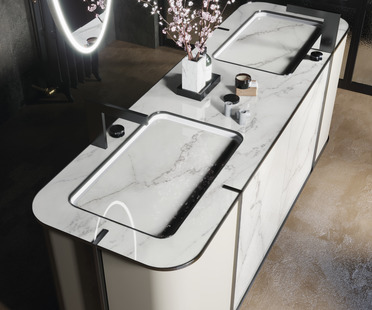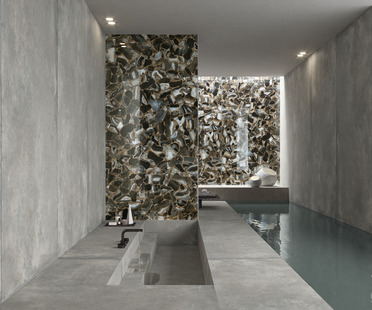- Blog
- Sustainable Architecture
- TOVA 3D printed house in local earth by IAAC
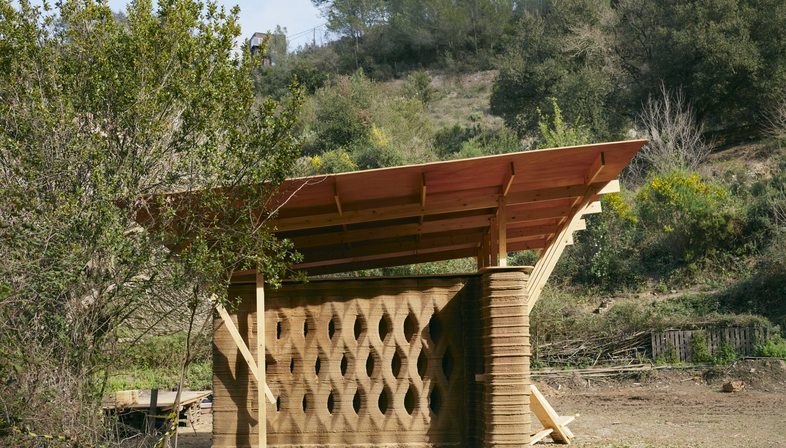 Our readers may remember TECLA, the architecture created in early 2021 by MCA Mario Cucinella Architects using a 3D printer developed by WASP (link), using local earth as the raw material. Here’s a new example using the same technology: TOVA, a prototype that we find at the facilities of the Valldaura labs, on the outskirts of Barcelona. The project was developed by the team of students and researchers of the 3D Printing Architecture (3dPA) postgraduate program offered by the Institute for Advanced Architecture of Catalonia (IAAC) and is the first architectural construction of this type in Spain.
Our readers may remember TECLA, the architecture created in early 2021 by MCA Mario Cucinella Architects using a 3D printer developed by WASP (link), using local earth as the raw material. Here’s a new example using the same technology: TOVA, a prototype that we find at the facilities of the Valldaura labs, on the outskirts of Barcelona. The project was developed by the team of students and researchers of the 3D Printing Architecture (3dPA) postgraduate program offered by the Institute for Advanced Architecture of Catalonia (IAAC) and is the first architectural construction of this type in Spain.Almost everywhere in the world design and technological solutions are being researched and developed that can minimise the environmental impact of buildings. An issue that the IAAC, in its capacity as a research, training, production and communication centre based in Barcelona has also been dedicating itself to. In fact, in its 17 years of activity, the goal of the IAAC has been to lead the mission to imagine the future habitat of our society and to build it in the present.
So what better than to get together with a company like WASP that is developing 3D printers that use poor and omnipresent materials such as earth which, with some additions, becomes the raw material to print buildings. Thus TOVA was born, project that combines vernacular architecture in earth with large-scale 3D printing technology.
But let's take a close look at TOVA, designed for Mediterranean climatic conditions, where the volume is compact to protect from the cold in the winter, but expandable during the other three seasons of the year. The walls are made up of a network of cavities that facilitate the flow of air and therefore provide insulation to avoid heat loss in the winter and protect from solar radiation in the summer. It should be emphasised that this is a near-zero carbon emission project, whose construction produced no waste and took only 7 weeks to complete. All created using the Crane WASP, an architectural 3D printer, and zero km materials – in other words local earth mixed with additives and enzymes – to guarantee the structural integrity and elasticity of the material needed for 3D printing. The foundations are made of geopolymer and the roof is made of wood. A waterproof coating, on the other hand, made of raw materials extracted from aloe and egg white, guarantees resistance to adverse weather conditions.
It is an extremely interesting research, as 3D printing (or additive manufacturing) is an excellent example of zero km construction where construction works can be carried out 100% with local materials and labour. Clearly some question marks remain, because yes, this new technology lends itself well to the quick construction of houses, even customised if needed. However, the process necessitates machinery that must be transported to the work site and requires electricity that may not be available in emergency situations, as 3D construction often comes up as a solution in response to natural disasters, to provide new homes very quickly.
Regardless of these questions that have yet to be answered, the TOVA prototype developed by IAAC students and researchers with WASP in Valldaura, allowed young architects and academics to investigate the future of construction and to explore the many possibilities of 3D printing in this sector.
Christiane Bürklein
Project: IACC with WASP
Location: Valldaura Labs, Barcelona, Spain
Year: 2022
Images: © Gregori Civera










